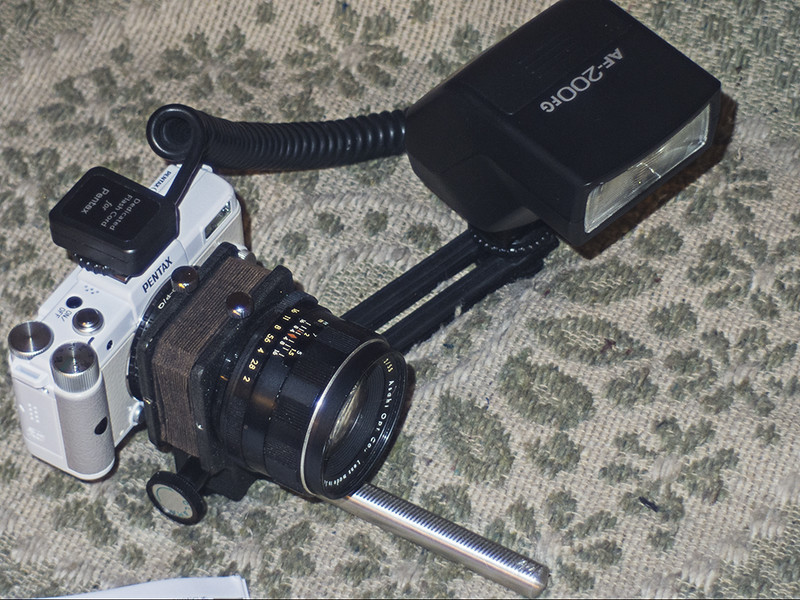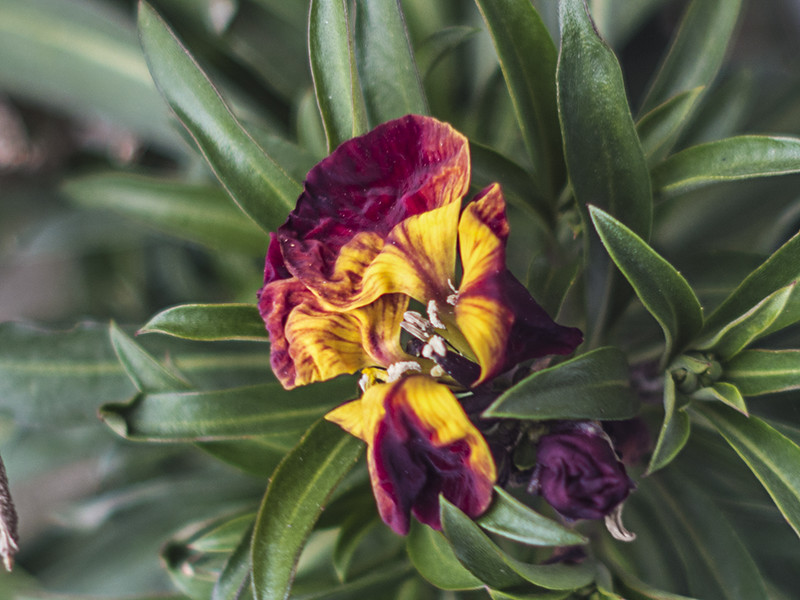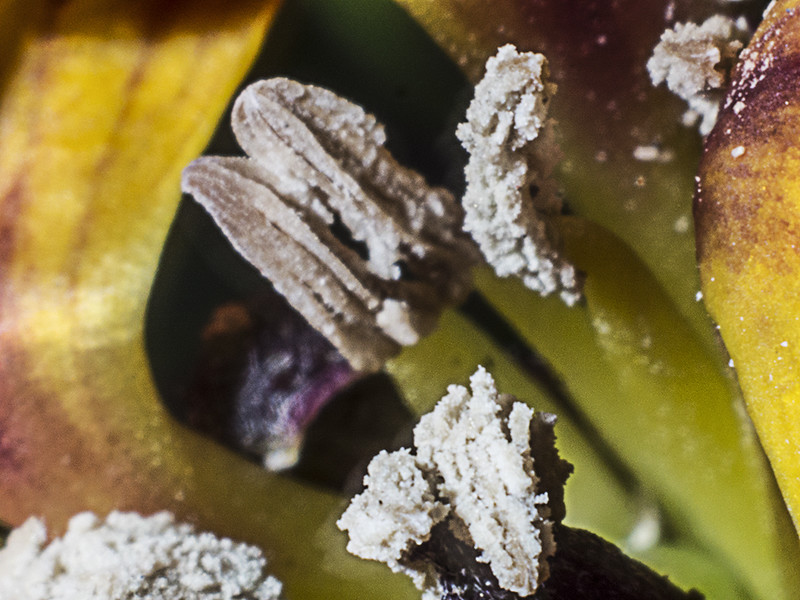The Q does have P-TTL capability with any dedicated flash such as the AF-200FG shown which is how I use it.
The idea is you use a low ISO and a small aperture, the area that the lens can see is small and will not reflect much light so 90%+ of the exposure is the light from the flash, then the 1/13th of a second scan time doesn't make any difference as so little of the ambient light is part of the exposure so it doesn't register on the sensor.
Then the flash duration is effectively your shutter speed. At these low powers (because you are so close) the flash duration will be much faster then 1/1000th (can be as fast as 1/50,000th) of a second, fast enough to freeze any camera movement from hand holding. That's how the above shots were taken.
In the third one there is some slight smudging of the brighter parts of the flower (the yellow area on the right hand side of the flower), if the ambient had been darker (this was shot in overcast daylight, early afternoon) that smudge wouldn't be there as it would have been dimmer, if you see what I mean.
Not wanting to 'teach Grandma to suck eggs', I hesitate to say how flashguns (strobes) work, but for the uninitiated the flash tube always works on full power, the different outputs alter the flash duration, even at maximum power it will be around 1/1000th of a second, at lower powers the flash reduces the flash duration, on minimum power it can be as fast as 1/50,000th of a second. With TTL the camera sends a signal to the flashgun to quench the flash when it has seen enough light. It fires a pre-flash and from this info it sets the timing of the flash duration automatically.
There are some advantages in using a manual flash where you can manually adjust the output, and therefore the flash duration.
When taking a flash picture you are taking two exposures simultaneously, the flash component and the ambient component. With manual every thing, manual mode on the camera and manual flash you can alter both exposures independently, it works like this.
ISO and Aperture control both the ambient and flash components the same.
Flash to subject distance and flash power controls just the flash component.
Shutter speed controls just the ambient, shutter speed is always slower than the flash duration so shutter speed has no effect on the flash component.
We can use this, when taking Macro images the flashgun to subject will always be the same, the focus sets it, when it's in focus the distance from the subject must be the same as every other shots at these settings.
We know the 'shutter time' is 1/13th of a second, by using a small aperture, low ISO and having dim conditions we can eliminate the ambient to be too low to record on the sensor, so the only light the camera sees is the flash. By having that on low power we have a faster flash duration, you will have to set the flash output to get a decent exposure, but once set it will always be the same as long as you don't change any of the settings, with TTL we place the flash close to the subject then the camera will automatically set a low power and hence rapid flash duration. Easily fast enough to freeze any of the inevitable camera movement. The advantage with manual flash, apart from price, is that they will usually have lower power settings than TTL flashguns do, some as low as 1/256th power.
You can use this technique in normal photography too to get totally black backgrounds which is how this was taken.

Then slowing shutter speed will increase the brightness of the ambient, you have total control.
Sorry for going (slightly) off topic.
Chris


 Similar Threads
Similar Threads 





















 Same distance with 01 Prime
Same distance with 01 Prime 50mm lens with 25mm extension "tube"
50mm lens with 25mm extension "tube"




 Post #83 by Phenix jc
Post #83 by Phenix jc








